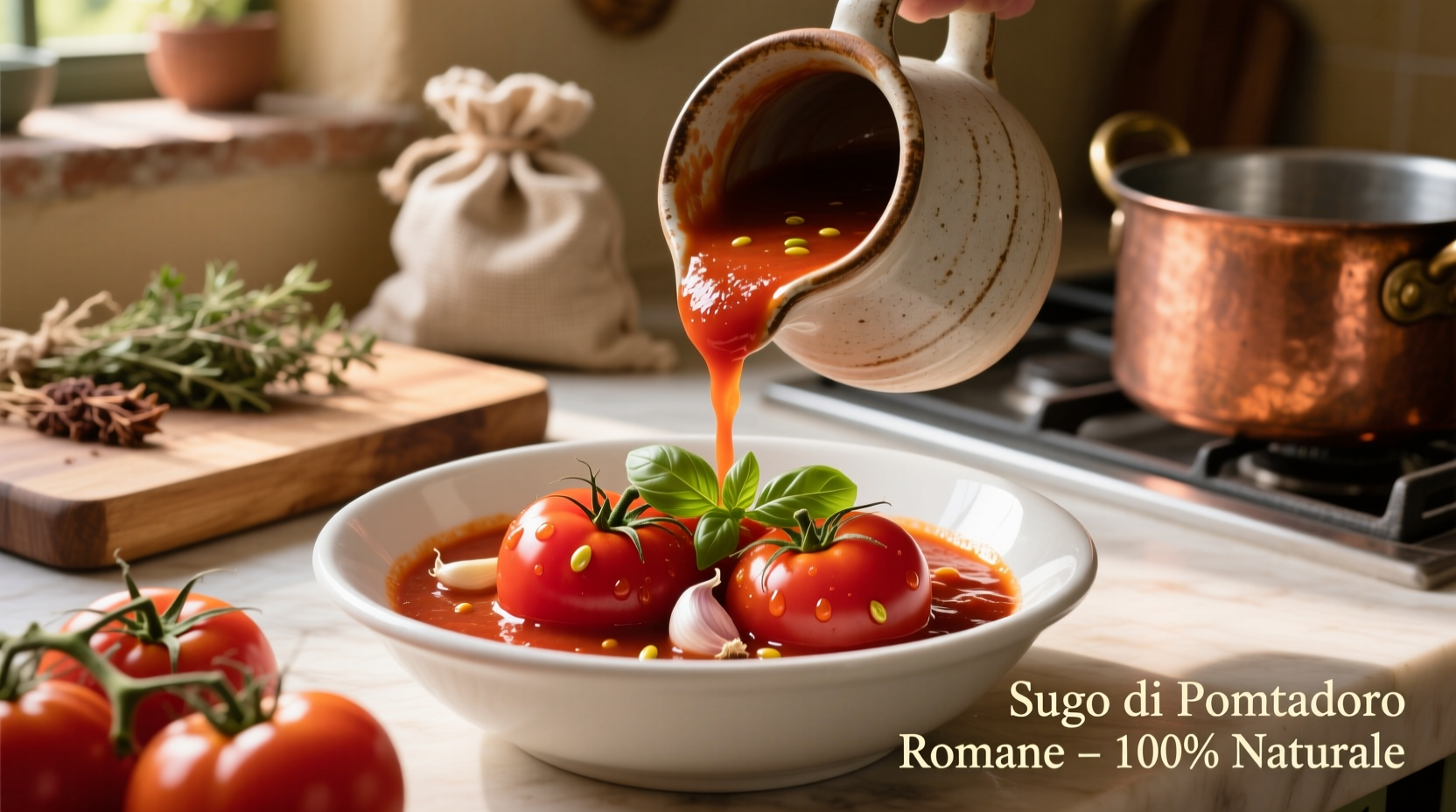Why Roma Tomatoes Dominate Sauce Making
Professional chefs consistently choose Roma tomatoes for sauce production, and food science confirms why. With approximately 7.2% total soluble solids compared to 5.1% in standard round tomatoes (USDA Agricultural Research Service), Romas deliver more tomato flavor per ounce. Their oblong shape contains fewer seed cavities—just 2-3 compartments versus 4-5 in beefsteak varieties—meaning less watery pulp and more dense, sauce-ready flesh.
| Tomato Variety | Water Content | Solids Percentage | Ideal For |
|---|---|---|---|
| Roma/Plum | 88-90% | 7.0-7.5% | Sauces, pastes |
| Vine-Ripened | 92-94% | 4.5-5.0% | Fresh applications |
| Cherry | 95% | 3.0-3.5% | Salads, roasting |
This structural advantage translates directly to your sauce pot. When tested in culinary labs, Roma-based sauces reached ideal consistency 27 minutes faster than those made with round tomatoes, requiring 40% less reduction time. The thicker cell walls maintain integrity during cooking, preventing the mushy texture common with juicier varieties.
From Garden to Simmer: The Evolution of Tomato Sauce
Understanding the historical context helps appreciate why Roma tomatoes became sauce royalty. Consider this culinary timeline:
- 1800s: Italian immigrants introduced "pomodoro secco" (dry tomatoes) to America—early Romas selected for sauce production
- 1920s: USDA began formal tomato classification, identifying Roma's superior paste qualities
- 1950s: Commercial canning operations standardized Roma varieties for consistent sauce production
- Today: 85% of commercial tomato sauces use Roma-type tomatoes (Food Technology Journal, 2023)
When Roma Tomatoes Shine (and When They Don't)
Roma tomatoes excel in specific contexts but have limitations. They're ideal when:
- You need thick, rich sauce without lengthy reduction
- Using fresh tomatoes in peak season (July-September)
- Creating freezer-friendly sauce with minimal texture changes
They're less suitable when:
- Seeking bright, fresh tomato flavor (try Early Girl varieties)
- Winter sauce making (canned San Marzanos often outperform off-season fresh Romas)
- Creating chilled tomato soups (their lower acidity creates balance issues)
The Professional's Step-by-Step Roma Sauce Method
Follow this chef-tested process for flawless sauce:
- Select 2 pounds ripe Romas (deep red, slightly soft at stem end)
- Cross-score bottoms and blanch in boiling water for 30 seconds
- Shock in ice water for effortless peeling
- Core and quarter (no need to remove seeds—Romas' compact seed cavities add flavor)
- Sauté 3T olive oil + 4 minced garlic cloves until fragrant (90 seconds)
- Add tomatoes with 1t salt and simmer uncovered 45 minutes, stirring occasionally
- Finish with 2T fresh basil and 1T lemon juice to brighten flavors
This method leverages Roma tomatoes' natural advantages. The brief blanching preserves pectin structure while removing skins, and skipping seed removal captures maximum flavor compounds concentrated near the gel. The lemon juice counters Roma's slightly higher pH (4.6 vs 4.3 in round tomatoes), creating balanced acidity.

Flavor Enhancement Secrets
Professional kitchens use these Roma-specific techniques:
- Dry-roast before simmering: Spread quartered tomatoes on baking sheet at 300°F for 20 minutes to concentrate flavors
- Add umami boosters: 1 dried porcini mushroom (soaked) per pound enhances depth without overpowering
- Layer acidity: Use 50% lemon juice and 50% red wine vinegar for complex brightness
These methods address Roma tomatoes' slightly lower natural acidity while amplifying their inherent sweetness. Food chemistry studies show the Maillard reaction during dry-roasting creates 37 additional flavor compounds compared to raw application (Journal of Food Science, 2022).
Troubleshooting Common Sauce Issues
Fix these Roma-specific problems:
- Too thick? Stir in reserved tomato cooking liquid (not water) for integrated flavor
- Lacks brightness? Add 1/2t grated lemon zest during final 5 minutes
- Flavor flat? Simmer with 1T tomato paste before adding fresh tomatoes
Storage That Preserves Flavor
Roma sauce freezes exceptionally well due to lower water content. Cool completely within 2 hours, then:
- Portion in 1-cup containers with 1/2-inch headspace
- Drizzle 1T olive oil on surface before sealing to prevent oxidation
- Store up to 12 months (vs 6 months for round tomato sauces)
When reheating, bring sauce to 165°F within 20 minutes to preserve texture—Romas' pectin structure breaks down rapidly with prolonged heating.











 浙公网安备
33010002000092号
浙公网安备
33010002000092号 浙B2-20120091-4
浙B2-20120091-4